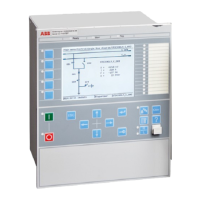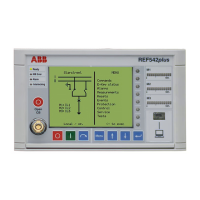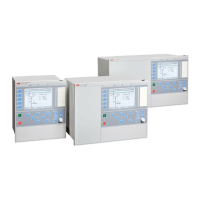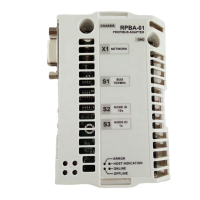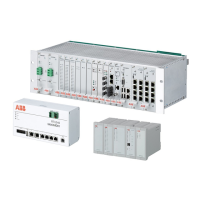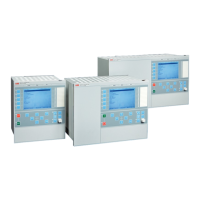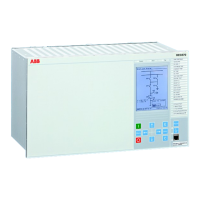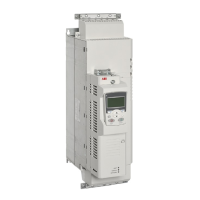4. Decrease the voltage slowly and note the reset value.
5. Set and apply a 20% higher voltage than the measured operate value for one
phase.
6. Measure the time delay for the TR1 signal and compare it with the set value.
7. Check the inverse time delay by injecting a voltage corresponding to 1.2 × U1>.
For example, if the inverse time curve A is selected, the trip
signals TR1 and TRIP operate after a time corresponding to the
equation:
IECEQUATION2429 V1 EN (Equation 25)
where:
t(s) Operate time in seconds
k1 Settable time multiplier of the function for step 1
U Measured voltage
U1> Set start voltage for step 1
8. Repeat the test for Step 2 of the function.
10.5.3.2 Completing the test
Continue to test another function or end the test by changing the TestMode setting to
Off. Restore connections and settings to their original values, if they were changed for
testing purposes.
10.5.4 Voltage differential protection VDCPTOV
Prepare the IED for verification of settings as outlined in section
"Requirements" and
section "Preparing for test" in this chapter.
10.5.4.1 Check of undervoltage levels
This test is relevant if the setting BlkDiffAtULow = Yes.
Check of U1Low
Procedure
1. Connect voltages to the IED according to valid connection diagram and figure
18.
2. Apply voltage higher than the highest set value of UDTrip, U1Low and U2Low
to the U1 three-phase inputs and to one phase of the U2 inputs according to
figure 18.
The voltage differential START signal is set.
1MRK 511 360-UEN A Section 10
Testing functionality by secondary injection
Bay control REC670 2.1 IEC 121
Commissioning manual
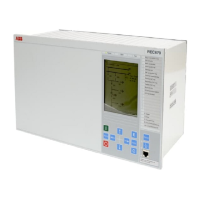
